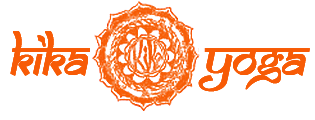How Does Breathwork Improve My Health?
In the yoga tradition, the breath is a powerful tool for directing and expanding our vital energy or prana. Breathwork—also known as pranayama—has a dramatic impact on the health of the physical body and has been been shown to diminish anxiety, boost vitality, relax the nervous system and clear the mind.
Proper yogic breathing helps to improve and diminish many health conditions, including high blood pressure, asthma, and other respiratory diseases like chronic obstructive pulmonary disease (COPD). It lowers the heart rate, improves the efficiency of the chest muscles and entire respiratory system, improves pancreatic functioning, and brain function.
How Does it Work?
When we do not breathe properly, we aren’t able to take in enough oxygen needed for our cells to function optimally and efficiently. Lack of oxygen at the cellular level is a major contributor to disease. At its core, yogic breathwork not only increases the total intake of oxygen, but also dramatically improves efficiency of breathing. More oxygen is made available with each breath.
When we learn how to breathe using the diaphragm (also known as abdominal or belly breathing), we allow the lungs to expand more easily. This encourages a more efficient exchange of oxygen—maximizing better input of oxygen for output of carbon dioxide. By balancing vital energy at the cellular level through breath regulation, we can improve the functioning of our internal organs, which in turn prevents or reverses the effects of illness.
Committing to a simple, but consistent daily practice of breathing with intention can significantly improve how you feel and function. Your breath is the key to finding your own personal power and unique path to transforming your health and well-being.
Breathe deeply,
xo Kika
How to Do Diaphragmatic Breathing
Lie on your back and support the body to be comfortable. You can place pillows under your knees and/or head.
Place one hand on your chest and one hand on your abdomen below the ribs and above the belly button.
Breathe in naturally and slowly through the nostrils. The belly should rise and the hand on the chest should be still.
When you breathe out, activate the abdominal muscles so the belly descends to its original position.
For best results, practice for at least 5 minutes every day.
For better results, practice up to 10 minutes several times a day.

